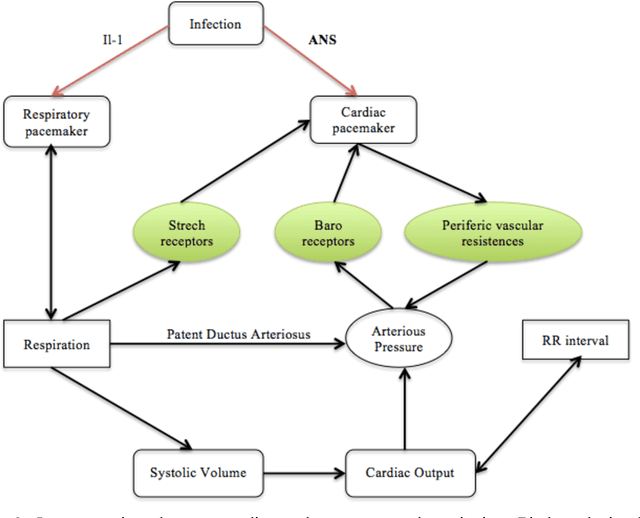Heart Rate Variability and Respiration Signal as Diagnostic Tools for Late Onset Sepsis in Neonatal Intensive Care Units
Paper and Code
May 12, 2016



Apnea-bradycardia is one of the major clinical early indicators of late-onset sepsis occurring in approximately 7% to 10% of all neonates and in more than 25% of very low birth weight infants in NICU. The objective of this paper was to determine if HRV, respiration and their relationships help to diagnose infection in premature infants via non-invasive ways in NICU. Therefore, we implement Mono-Channel (MC) and Bi-Channel (BC) Analysis in two groups: sepsis (S) vs. non-sepsis (NS). Firstly, we studied RR series not only by linear methods: time domain and frequency domain, but also by non-linear methods: chaos theory and information theory. The results show that alpha Slow, alpha Fast and Sample Entropy are significant parameters to distinguish S from NS. Secondly, the question about the functional coupling of HRV and nasal respiration is addressed. Local linear correlation coefficient r2t,f has been explored, while non-linear regression coefficient h2 was calculated in two directions. It is obvious that r2t,f within the third frequency band (0.2<f<0.4 Hz) and h2 in two directions were complementary approaches to diagnose sepsis. Thirdly, feasibility study is carried out on the candidate parameters selected from MC and BC respectively. We discovered that the proposed test based on optimal fusion of 6 features shows good performance with the largest AUC and a reduced probability of false alarm (PFA).
 Add to Chrome
Add to Chrome Add to Firefox
Add to Firefox Add to Edge
Add to Edge